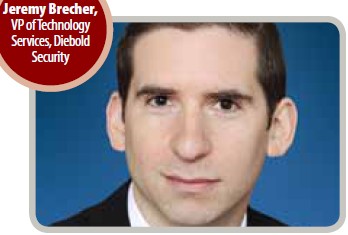Busy metro stations at prime locations attract retailers and other businesses. The increase in multipurpose metro stations has brought commercial opportunities, along with security/safety risks and management complexity.
Busy metro stations at prime locations attract retailers and other businesses. The increase in multipurpose metro stations has brought commercial opportunities, along with security/safety risks and management complexity.
Mass transit can be a complex scene. “As a fast moving and complex environment, a metro station retail area is difficult to monitor and almost impossible to assess for suspicious activity using security staff and surveillance alone,” said Skip Dunnett, Threat, Vulnerability and Risk Consultant at Digital Barriers.
Dunnett added. “Scene change analytics running over surveillance cameras could monitor routine patterns in and around retail outlets and assist security staff to identify areas and times where a threat might arise.” This analysis would be useful for station managers as they would be able to identify high-risk areas in the station more readily.
Actions Speak Louder Than Words
A regular program of updates on the threats and risks faced by the metro station will enforce a collective responsibility for security and encourage better practices. Centralized training and awareness briefings provided by the metro station security managers will help instill a sense of worth in the retail security staff who are often lowly paid and lack proper training, said Skip Dunnett, Threat, Vulnerability and Risk Consultant at Digital Barriers. “The coordination of all reports, be it electronic or verbal, is vital to the security within this multidimensional environment. Whenever possible, only one control room should exist, and this is also where all retail security reports and concerns should be directed to. This also helps enrich the threat and risk picture for the station as a whole.”
Integration and Configuration
Getting useful information to the right people in a timely manner is crucial for metro systems, especially with scores of fast moving passengers. “There is a strong pattern in integration. Cameras and surveillance intelligence are synchronized to ensure physical safety in unplanned events such as station evacuations,” said James Chong, CTO and Senior VP of Strategic Innovation, Vidsys.
A mass transit system is an expensive, integral part of public infrastructure — safety and evacuation must be an integral consideration with security, said Patrick Lim, Director of Sales and Marketing, Ademco Far East (an Ademco Security Group company). “For example, surveillance can be integrated with evacuation systems, thus offering intelligent information for a path of escape. Relevant doors can be remotely or automatically unlocked, and communication systems can work in tandem to provide automated information displays or announcements that can facilitate orderly evacuations.”
“Linking the communications of safety, evacuation systems and security infrastructure will allow for correlation and verification of critical data coming into the control room,” said Adlan Hussain, Marketing Manager, CNL Software.
Evacuation systems, however, are inherently insecure, as faked emergencies could become major security vulnerabilities. Conflicts might thus arise during the integration and configuration of security and fire safety systems. “In practice, security systems are set to ‘fail open' in the case of an incident, thus creating an opportunity for exploitation,” Dunnett said. “In order to overcome these weaknesses, security managers must understand the operation and methodology behind these evacuation systems so as to, ideally, influence their design during the planning and installation. If this early involvement is not possible, understanding the safety system will assist the design of any retrospective security protection. Security planners can ensure that access control to key operation assets or high-value targets can be maintained in any given situation. For example, consideration should always be given to evacuation routes, and steps taken to ensure that key assets are not placed in these areas. Other techniques include the protection of key areas by the use of one-way flow access control and the automatic lockdown of vulnerable  IT systems.”
IT systems.”
Centralized Command
In bigger subway systems — and especially in older systems — there are not always centrally located operating systems. “For instance, fire controls utilize local systems, while rail, power and evacuation control and information are not always connected,” said Jeremy Brecher, VP of Technology Services at Diebold Security. During incidents, however, communication networks must be able to cope with overflowing data and voice commands.
“The importance of communication has been elevated since 9/11, especially when it comes to the protection of first responders. Unfortunately, radio signals and other forms of communication are still used in many subway applications, and the problems aren't always highlighted until a real emergency occurs,” Brecher said. “Generally, most highly complex environments should include their own backhaul delivery for information instead of shared delivery. If the system does utilize shared delivery, there should be a very well-designed quality of service and prioritization incorporated into the system.”
An alternative is the installation of a redundancy management system that will not only control the flow of vital data and voice commands but will also manage the inherent redundancy within any command and control system to allow for a greater flow of potentially time-critical information, Dunnett added.
“This is where IP networks become important and provide long-term cost savings, too,” Lim said. “In the past, transport systems had an enormous amount of different cables; it could be very costly to provide redundancy. With IP technologies, it is more cost-effective to have redundant and armored protection for transmission.”
Team Effort
Surveillance and physical security concerns are responsibilities of security managers, but public address, evacuation, notification and radio systems, on the other hand, are under the purview of other departments, highlighting again the need for clear and constant communication among all parties from planning through implementation and operation. “It also highlights the need for security managers to play a key role in training the operators and ensuring that the systems they have implemented will be correctly operated and maintained by the operators and transit authorities,” Brecher said. “Ensuring that proven technologies are correctly implemented the first time leads not only to a cost-effective application, but also increased effectiveness of the tools. Ultimately, this results in a more secure environment.”
Maintenance and Training
Getting the systems up and running after a thorough risk assessment is not the end. “Conducting continuous system maintenance and risk evaluation throughout the operation is equally important,” said Armine Beybutyan, Product Sales and Marketing Manager, Korenix Technology (a Beijer Electronics Group company).
Identifying training needs and service requirements is an ongoing process. “Working hand-in-hand with transit authorities to ensure they understand the system will ultimately determine how effective it is on a day-to-day basis,” Brecher said.